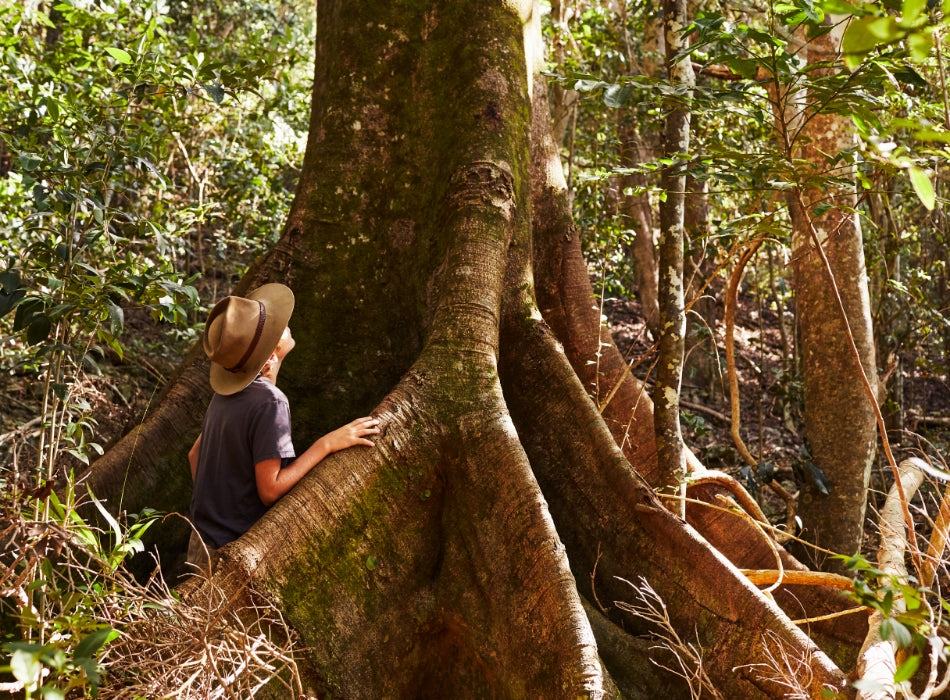Ethos
The Range Estates properties, each in their own unique way, are a sanctuary for guests designed with a respect for nature. Committed to giving back to the environment, each of the properties has been consciously designed to ensure they sit quietly amongst the landscape, using natural materials and considering the native surrounds in every element of their creation.


With sustainability and the environment at its heart, The Range Estates has made several sustainable achievements with a commitment to continuous growth and sustainability.
All properties are predominantly off the grid / self-sufficient.
Rainwater is captured in each of the properties fully operational water tanks while the extensive gardens are irrigated using water from the land.
Proudly solar passive designed, each property’s cooling and heating is generated by the sun and wind, allowing nature to do most of the work.
Electricity is generated through solar panels with the power stored in large battery banks. When the weather is overcast, the batteries kick in and provide back-up power so one can keep in flow with the moment.
All properties are predominantly off the grid / self-sufficient.
Rainwater is captured in each of the properties fully operational water tanks while the extensive gardens are irrigated using water from the land.
Proudly solar passive designed, each property’s cooling and heating is generated by the sun and wind, allowing nature to do most of the work.
Electricity is generated through solar panels with the power stored in large battery banks. When the weather is overcast, the batteries kick in and provide back-up power so one can keep in flow with the moment.
Renovation
When starting the building process for The Range, it was first thought to knock down the house, and build from scratch, but then the plan changed. In the process of demolition, it was evident the house had solid bones and the slab and other parts of the house would have to be buried in the ground to dispose of it, which was considered to be a waste of resources. And so, the decision was made that it was better for the environment to use and build around what was already there and recycle where possible.
Throughout the build recycled materials in many areas throughout the house were used. Floor tiles were created from three-hundred-year-old terracotta tiles from an old, demolished Casa in Croatia; the Australian hardwood bathroom vanities were recycled; timber frames from the old house were repurposed into shelves; the rock walls and various stone features were made using rocks from the property’s rainforest where they had been moved many years ago when the land was being cleared. In applying this tactic, it was hoped The Range was made truly authentic to its surrounds and given space to tell its rich history.
Similar when the old homestead was taken down at Copperstone (which was found to have had compromised foundations), it was decided that the building materials be recycled and used to build the stables and various joinery and structural features.
Building a home is not just about bricks and mortar - it’s about creating a feeling and an environment which sits comfortably into the landscape. The process of creating each of The Range Estates properties is a journey of discovery as each stage unfolds from the initial idea to the design and the evolution of your experience of living there. Each of the properties homesteads are just one aspect of these properties – the magnificent acreage they sit on are another story.
Gently working with the land to honour its past as well as position it for the future, (mindful of regeneration and the delicate ecosystem that supports nature to continue to deliver its magic), TRE is committed to supporting the environment the best way they can and, although not perfect, they hope that each step they take can lead them to work towards a better future.
Among the dream of building a stable of beautiful estates, each unique, TRE aims to continue taking care of the land they live on and hope to reach some key goals in the coming years. These include planting 50,000 trees over the next ten years, creating walking tracks throughout the properties to enjoy nature without harming it, be as energy efficient as possible (exercise solar passive design), be as close to organic as possible in their farming practices and to upcycle, recycle and repurpose as much natural resources as possible.





